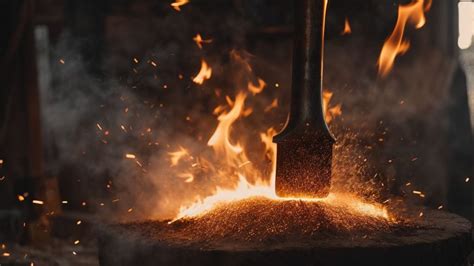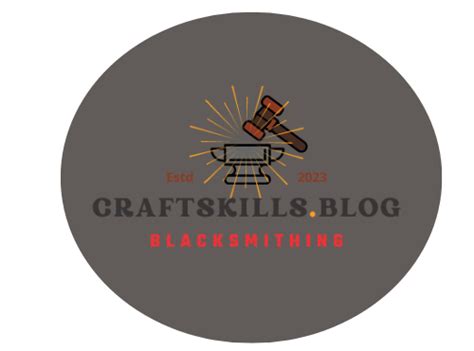blacksmith metal cooling box What is a blacksmithing forge? How does a forge work? What is the difference between a forge, furnace, and foundry? Blacksmithing forges have been used by metalworkers for millennia. Blacksmiths use a forge to heat and shape metal. $52.00
0 · Understanding The Basics Of Quenching In Blacksmithing
1 · Types of Quenching Process for Blacksmithing (What’s Best?)
2 · The Art of: Understanding Blacksmithing Heat & Forge Secrets
3 · Tempering for Quality and Endurance: Techniques
4 · Historic Bethlehem
5 · Heat Treating – Alec Steele Co.
6 · Forge Fire Pot
7 · Cooling metal – Breakthrough Blacksmithing
8 · Blacksmithing: Ultimate Guide to Hardening & Tempering
9 · Blacksmithing Forge 101: How To Make Forges At
Products - Woody's Sheet Metal – Custom fabricated sheet metal building products .
Annealing Techniques for Modern Blacksmithing Introduction: Annealing is a fundamental process in blacksmithing that involves heating and slowly cooling metal to relieve internal stress, .Quenching is a critical process in blacksmithing that involves cooling heated metal rapidly. This technique plays an essential role in the overall Heat treatment of the material, allowing .
Various hardening techniques can be employed, such as water quenching, oil quenching, or air cooling, depending on the desired outcome and the type of metal being worked with. On the other hand, tempering involves reheating the .
installing a junction box for light fixture
What is a blacksmithing forge? How does a forge work? What is the difference between a forge, furnace, and foundry? Blacksmithing forges have been used by metalworkers for millennia. Blacksmiths use a forge to heat and shape metal. Tempering is a heat treatment technique used by blacksmiths to improve the quality and endurance of metal products. It involves heating the metal to a specific temperature and then rapidly cooling it, followed by reheating it to .The process of heating and cooling a workpiece to relieve stress and refine internal grain structures. Liquid Hardening The most common hardening technique for blacksmiths and bladesmiths is liquid hardening; the vast .Our selection of blacksmith and farrier forge pots include heavy-duty coke firepots, round mini firepots, firebowls, and more. Get yours today at Centaur Forge.
Blacksmiths of the 18th and 19th centuries had different qualities of iron available to them. Even if a high grade of iron were used, the metal frequently needed additional attention by the smith .
Understanding The Basics Of Quenching In Blacksmithing
Heat sources such as coal, charcoal, propane, or natural gas are commonly used in blacksmithing forges to achieve high temperatures required for shaping and manipulating metals.Annealing Techniques for Modern Blacksmithing Introduction: Annealing is a fundamental process in blacksmithing that involves heating and slowly cooling metal to relieve internal stress, increase its ductility, and improve workability. It is an essential technique used by modern blacksmiths to manipulate metals effectively.

Quenching is a critical process in blacksmithing that involves cooling heated metal rapidly. This technique plays an essential role in the overall Heat treatment of the material, allowing blacksmiths to enhance the properties of metals.Various hardening techniques can be employed, such as water quenching, oil quenching, or air cooling, depending on the desired outcome and the type of metal being worked with. On the other hand, tempering involves reheating the hardened metal to a lower temperature than that used during hardening.
The quenching process in blacksmithing and metalworking provides a way to quickly cool and harden a metal workpiece after working on it in a heated environment.
What is a blacksmithing forge? How does a forge work? What is the difference between a forge, furnace, and foundry? Blacksmithing forges have been used by metalworkers for millennia. Blacksmiths use a forge to heat and shape metal. Tempering is a heat treatment technique used by blacksmiths to improve the quality and endurance of metal products. It involves heating the metal to a specific temperature and then rapidly cooling it, followed by reheating it to a lower temperature and cooling it again.
The process of heating and cooling a workpiece to relieve stress and refine internal grain structures. Liquid Hardening The most common hardening technique for blacksmiths and bladesmiths is liquid hardening; the vast majority of steels that forge easily are oil or water hardening steels, most of which are oil hardening.
Our selection of blacksmith and farrier forge pots include heavy-duty coke firepots, round mini firepots, firebowls, and more. Get yours today at Centaur Forge.Blacksmiths of the 18th and 19th centuries had different qualities of iron available to them. Even if a high grade of iron were used, the metal frequently needed additional attention by the smith before he used it.Heat sources such as coal, charcoal, propane, or natural gas are commonly used in blacksmithing forges to achieve high temperatures required for shaping and manipulating metals.
Annealing Techniques for Modern Blacksmithing Introduction: Annealing is a fundamental process in blacksmithing that involves heating and slowly cooling metal to relieve internal stress, increase its ductility, and improve workability. It is an essential technique used by modern blacksmiths to manipulate metals effectively.Quenching is a critical process in blacksmithing that involves cooling heated metal rapidly. This technique plays an essential role in the overall Heat treatment of the material, allowing blacksmiths to enhance the properties of metals.
installing a junction box in the ceiling no joints
Various hardening techniques can be employed, such as water quenching, oil quenching, or air cooling, depending on the desired outcome and the type of metal being worked with. On the other hand, tempering involves reheating the hardened metal to a lower temperature than that used during hardening. The quenching process in blacksmithing and metalworking provides a way to quickly cool and harden a metal workpiece after working on it in a heated environment.What is a blacksmithing forge? How does a forge work? What is the difference between a forge, furnace, and foundry? Blacksmithing forges have been used by metalworkers for millennia. Blacksmiths use a forge to heat and shape metal. Tempering is a heat treatment technique used by blacksmiths to improve the quality and endurance of metal products. It involves heating the metal to a specific temperature and then rapidly cooling it, followed by reheating it to a lower temperature and cooling it again.
.jpg)
The process of heating and cooling a workpiece to relieve stress and refine internal grain structures. Liquid Hardening The most common hardening technique for blacksmiths and bladesmiths is liquid hardening; the vast majority of steels that forge easily are oil or water hardening steels, most of which are oil hardening.Our selection of blacksmith and farrier forge pots include heavy-duty coke firepots, round mini firepots, firebowls, and more. Get yours today at Centaur Forge.
Types of Quenching Process for Blacksmithing (What’s Best?)
The Art of: Understanding Blacksmithing Heat & Forge Secrets

installing a ceiling electrical box
Tempering for Quality and Endurance: Techniques
Best affordable woodworking CNC machine: SainSmart Genmitsu 3018-PROVer; Best woodworking CNC machine with an alternative format: Maslow Machine; Best value-for-money production woodworking CNC machine: Phantom S Series
blacksmith metal cooling box|Historic Bethlehem